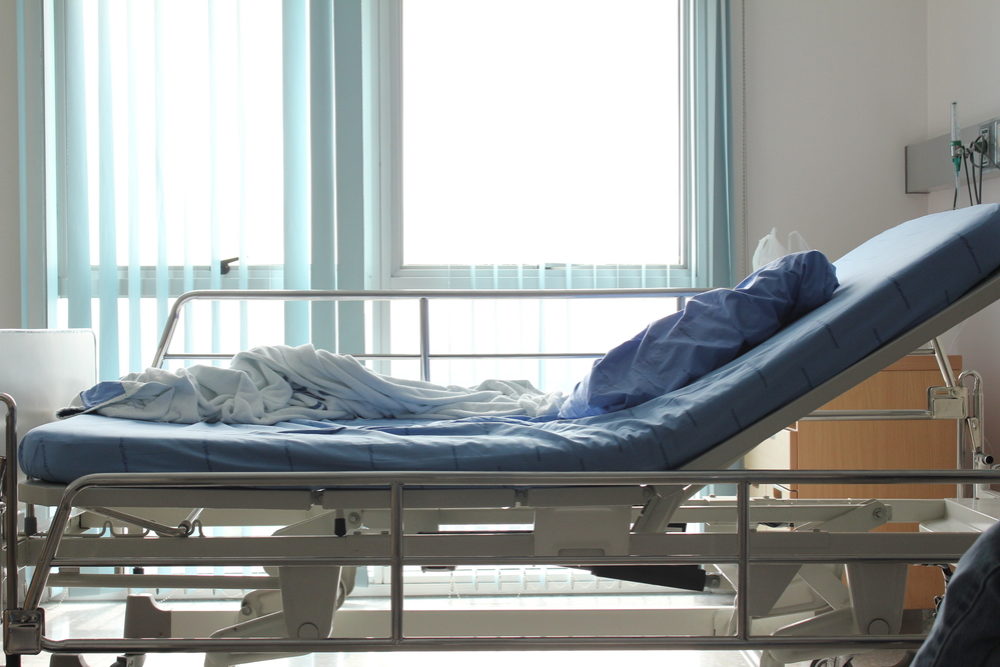Many Young Patients With Terminal Cancer Receive Useless, Aggressive Treatment: Study

New research raises questions about the use of aggressive treatment programs towards the end of terminally ill cancer patients’ lives, as they are often painful and unsuccessful, potentially sabotaging an individual’s quality of life.
In a study presented at the American Society of Clinical Oncology annual meeting in Chicago on June 6, researchers indicate that as much as 76% of 28,000 relatively young, terminally ill cancer patients receive some sort of painful and aggressive chemotherapy, radiation, or surgery within the last month of their lives.
Lead researcher Dr. Ronald Chen, associate professor of radiation oncology at the University of North Carolina, and his team set out to review claims data of more than 28,000 terminally ill cancer patients younger than 65 to determine the effectiveness of the aggressive treatments, and evaluate whether patients could have been cared for less painful treatment options.

Did You Know?
Millions of Philips CPAP Machines Recalled
Philips DreamStation, CPAP and BiPAP machines sold in recent years may pose a risk of cancer, lung damage and other injuries.
Learn MoreThe treatments the researchers refer to in the study include chemotherapy, radiology, and surgical procedures that cause various degrees of pain and emotional stress on the patients, and their family members.
The team’s analysis of the insurance records indicated that between 71% and 76% of cancer patients 65 years old and under that passed away from terminal lung, colon, breast, pancreatic, or prostate cancer underwent some form of aggressive, uncomfortable care at the end of life, raising the question of whether the end-of-life period for patients should involve the use of unsuccessful, painful treatment or be more focused on easing their suffering.
Researchers found that 24% to 33% of terminally ill patients received chemotherapy treatments, 9% to 21% received radiation therapy, between 25% and 31% underwent an invasive procedure such as a biopsy or surgery, and between 16% and 21% of patients were admitted to Intensive Care Units (ICU).
According to supporting data from the American Society of Clinical Oncology (ASCO), one-third of terminally ill cancer patients die in the hospital, while fewer than one-in-five are submitted to hospice care to ease their suffering.
Chemotherapy is the treatment of a drug that stops or slows the growth of cancer cells, which grow and divide quickly. However the effects of these drugs cause the individuals normal cells to decrease in production or stop growing often leading to hair loss and weight loss.
Common side effects of chemotherapy treatment, which can vary depending upon doses, include headaches, muscle pain, stomach pain, pain from nerve damage, such as burning, numbness, or shooting pains, usually in the fingers and toes, memory loss, hair loss, nausea, vomiting, constipation, and mouth and throat sores.
Radiation treatments are another form of aggressive cancer treatment that involves the use high-energy particles or waves, such as x-rays, gamma rays, electron beams, or protons, to destroy or damage cancer cells. Side effects vary greatly among the area in which the therapy is administered but generally include nausea, vomiting, blistering of the skin, shortness of breath, tooth decay, difficulty swallowing, incontinence, rectal bleeding, and may cause lymphedema.
Common surgical procedures that terminally ill patients undergo include biopsies and emergency surgeries, typically from the cancer shutting down the function of other vital organs of the body. Many of these procedures are extremely invasive and require recovery time that is often uncomfortable.
Chen stated in the release of the study that “additional efforts are critically needed to improve end-of-life care for patients with terminal disease to ensure that the care provided meets the goals and preferences of patients and their families.” Chen referenced that oftentimes patients will be forced into these types of treatments out of fear their family will think they are not trying to combat the disease. The researchers note that between 62% and 65% of patients received these aggressive forms of treatments at hospital emergency rooms under the supervision and assumed pressure of relatives or caregivers.
Dr. Andrew Epstein, an ASCO expert in palliative care added that these forms of treatment are frequently harmful, both physically and emotionally, to the patient. Epstein stated that patients’ family members often say; “if I had known it was going to be like this, we would have never wanted this,” referring to the aggressive forms of cancer treatments their relatives receive in their final days.
In light of the new data, which has not been peer reviewed, Epstein and Chen are asking doctors to take a more “patient-centric approach” to care delivery in assessing what the patient wants. They said doctors should be asking what is important to the patient while living with the condition, what are they hoping for the outcome to be, and would they be willing to undergo potentially severe discomfort until death even though the likelihood of the treatment reversing the effects is slim.
Want a weekly update on top lawsuits, recalls & warnings?
"*" indicates required fields





0 Comments